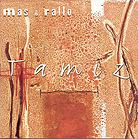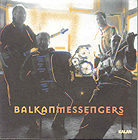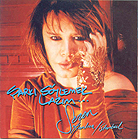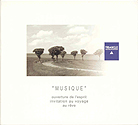|
|
|
|
|
|
|
|
|
|
 |
|
Facing the music
Simply, it didn't sound like the same system. A modern-version Princess Vac with super-high suction had removed cobwebs, between and around the notes I had remained blissfully unawares hung there in droves. Not the prime time material I had mistaken it for, in other words
Translation?
Things sounded louder, instantly. Someone had cranked the acuteness control wide open. Clearly, the noise floor had dropped - significantly. I could hear far deeper into the stage, as though a technician had decided to light the overhead candelabras before the opera was over. Call it the penetration of the former "fading hills" effect. You clearly saw the conductor in the pit. The second row of violins already got a bit hazy with their small reading lights illuminating mostly the scores. By the time you focused on the tympani, all was utter darkness. Now, the entire scene is lit up, exposing all its nooks and crannies.
All those "little" sounds that make up live music -- the clacking of saxophone keys, the spittle in the embochure of a trumpet player, the mechanical friction of horsehairs against strings -- emerged from out of this darkness. These details now popped. They vividly came to live, like amping up saturation levels on night-time images taken with over-exposure and no flash.
|
|
|
I also could play things far louder than before, without inviting the dreaded Goomboo monster of compression, hardness and glare. "Iman" by Mas & Rallo [Tamiz, Harmonia Mundi, 987025] is an overdubbed duet between the principals. One performs on udu, tablas and percussion, the other on 12-string guitar and additional percussion. It's an electrifyingly funky mix of Flamenco, Indian and Arabian idioms, replete with breakout Blues guitar riff above the asymmetrical "where's the downbeat" groove. The timbre of Javier Mas' 12-string is pervasively on the sharp side of metallic throughout the entire album. On this track in particular, he shreds his strings with zero regard for civility. Usually, this gets a bit unpleasant and steely. Time to turn down the volume. Dilute the bite. Soften up the ears. Not this time.
|
|
 |
|
The sharpness of attack, the incisiveness of upper harmonics were more defined than before - even brighter you might say. But, they were utterly lacking in offensive pain or discomfort. Call it the difference between cheap spicy food (the one that wrecks your throat, locks up your gullet and gets worse the more liquids you drink) and classy spicy that's still hot but complex, rich and with a "nose". It goes down with satisfying warmth but somehow bypasses this aggressive assault on the soft tissue in your mouth. It's neither unpleasant nor in need of suppression. Nor does it engender intuitive recoil.
|
|
Balkan Messengers [Kalan 222] unites Bulgarian accordion legend Nesho Neshev of Ivo Papasov's Orkestra Trakya with bassist Radi Kazakov who's also played with Papasov, as well as with Orient Express and Bulgaria's famous Jazz band White, Green & Red. The third chair is occupied by taciturn Turkish violin phenomenon Nedim Nalbantoglu whose two prior releases I consider some of my collection's crown jewels. This is extremely virtuoso avantgarde music. It combines Bulgarian wedding music, breakneck improvising, complex rhythms and a flamboyantly Klezmer-like non-concern for prettiness. Instead, it insists on communicating inner fire, abandon, madness and frenzy. In short, music that would go on a lot of people's nerves. But what with my cold Teutonic blood, it heats up my innards with glee and deep wonder.
|
|
|
|
|
|
 |
|
The Monaco was not unlike upgrading from a third-rate digital front end to one supremely resolved. More detail, more insight into the tangled webs of instrumental lines. More rhythmic precision, élan and drive. As though the musical fabric, its very threads, had been stripped of gunk and grease. Aural dry cleaning. In the bass, this translated as enhanced clarity and intelligibility. Less fat, more impact. Less drag, more speed. Less boiinnng, more zonk!
|
|
 |
One of my all-time favorite female vocalists is Turkish Ethno-Pop diva Sezen Aksu. My latest treasure? Sarki Soylemek Lazim [DMC], a gift from Divergent Technologies' Tash Goka who graciously feeds my unseeming aural appetite for this lady. My review of his Antique Sound Lab integrated is forthcoming shortly - it took a while to confirm that its oscillation in tetrode mode when driving my beloved AKG K-1000 headphones was due to the latter's 120-ohm impedance. Nothing wrong with my particular unit! Tash could duplicate this behavior on two of three of his inventory units, suggesting that the load was borderline and not truly copasetic. Now that we know, I'll focus on driving regular speakers instead. Back to my Turkish lady love.
|
|
Her voice is a truly unique instrument. It's as though her vocal cords had a crack somewhere, a rawness through which spills intense and unguarded emotion. It also causes a very peculiar yet riveting timbre. Think of the secondary noises of a split reed, the excess air of a woodwind player mixing into the instrumental sounds. It's an effect impossible to describe accurately. Yet it's along these lines.
As I came to think of it, the "Monaco Effect" caused Sezen to come forward on stage. Mind you, not spatially -- she didn't truly move forward as a body but rather, her locus was actually shifted backwards -- but in intensity, focus and powers of emotional projection. I've noted this same transformation with the Bel Canto eVo 200.4 before, when switching it from regular to balanced-bridged mode. You get the detail, leading edge attacks, supercharged rise times and individuated directness of a nearfield position. You also hear the scale and soundstage depth of the farfield.
On the romantically charged "Su Gibi", a backup chorus takes on the reprise of the main theme. Rather than being reduced to harmonic fill, each singer assumed distinct focus and personality. And Sezen? Her presence grew to truly acute proportions, condensing into that reach-out-and-touch-me effect so lusted after yet so rarely achieved. The "little" sounds mentioned earlier hovered around her like spotlights to intensify this palpable sense of 'there'.
Don't call it a rack though it's very spicy
Perhaps by now you can appreciate why Monsieur Monaco won't be leaving. None of the effects described above are unique per se. Upgrading speakers nails some of them. A better DAC will enhance resolution just the same. Likeswise, a superior SET will inject more presence and immediacy.
Did I just list three fully fledged components to duplicate the Monaco Effect though?
I sure did. Granted, this is not some hard-line mathematical formula to gauge its magnitude of impact. Rather, it's a deliberate suggestion. On how, once your components have reached a certain level of performance maturity, precious little remains to be done that will effect wholesale quantum leaps without spending obscene amounts of money. Even then, sometimes it doesn't pan out. Money isn't everything. Mostly it's the old White House shuffle - two steps forward, one back. Progress at snail's pace. High-End audio. The big syphon on finances, patience and ultimately, good faith.
Powerline conditioners without current restrictions can feed an entire system. That causes cumulative effects. Every component is plugged into them to set off an arithmetic chain reaction. Similarly, the Monaco stand "treats" your complete system - component by component as well as the complex interactions between them.
Consider that going from my Marantz CD recorder to the Bel Canto DAC-2 proved far less drastic. Swapping the PRe1 solid-state preamp for the Art Audio VPS-dm tubed unit was less far-reaching. Trading up from the $5,500 Art Audio PX-25 to the $10,000 AUDIOPAX monos? That's a somewhat closer call though at the end of the day, I still reckon that in terms of magnitude, the Monaco's ground-sweeping work might in fact eclipse the more focused arena of image density, soundstage precision and emotive projection the Brazilian amps bestowed over my potent 6-watter from Rhode Island.
Unlike cable swaps that can upset a system's carefully dialed-in balance -- reaping dividends here, subtracting there like a gift with strings attached -- Alvin Lloyd's system of comprehensive resonance control, in my system, did not elicit any negative reactions that would now require patching-up labor with some additional tweaks.
Where does that leave us?
I don't know about you, friend. Me, I've got this smug, self-congratulatory, shit-eating grin on my face. I now own a truly classy, Euro-chic equipment stand that doesn't require props to work - though I will experiment with my known assortment of Walker Valid Points to see how much of an effect they retain. The shelves are plenty deep to accommodate even outsized components should I ever get some of those for review. Most of all, at this stage of the game, I couldn't think of a single $3,500 expenditure that would reward with this type of powerful across-the-board improvements. Isolated aural ingredients of the Monaco Effect? Sure. But not this comprehensive, active-on-all-cylinders work-over now that my system has arrived at a fairly high level of sophisticated compatibility between expensive components of choice and distinction.
|
|
More remains to be tried and reported on. Consider this the front-line radio'd-in scuttlebutt from a guy deeply flushed and enamored with his most recent acquisition. Walkerisms and Carbon fiber shelf experiments to follow. Now hand me that saw. Time to come off my tree and cue up some more Sezen Aksu! You know, in my last life, I was an infamous lead-eared recording engineer. I used Yamahas for monitors exclusively. Time to heal that bad karma by digging up some truly good recordings to bow to how it's done properly. Check out Triangle Acoustique's latest compilation. It's this year's Burmester - mostly superb music, some interesting sound effects, superlative recording quality...
|
|
 |
|
Manufacturer's Reply
The imagery and comparisons in this review's intro are both wonderfully colorful and extremely poignant. For Grand Prix Audio, this emergence from what Srajan Ebaen dubs "the dark ages" (when audio equipment stands had no bearing on a system's sound at all yet) is doubly relevant. Not only does it introduce us and our product to a greater audience, his review of our unique applications of proven and established technologies also coincides with a parallel review of the Monaco stand, scheduled for publication in Stereophile's December issue.
When we first set out to build our Monaco stand, we took a comprehensive inventory of what the audio industry had to offer. We continue to do so. We perform exacting measurements on stands and accessories to learn about the performance capabilities of the status quo. We quickly discovered that existing stands were far more optimized toward addressing the extremely minimal component-generated vibrations while being ill equipped to cope with the far more disruptive, high amplitude floor-borne and air-borne vibrations being produced by the loudspeakers themselves. (Compare the quietest human whispers to the loudest music you play. That is a reasonable comparison of the difference in amplitude between humming transformers and loudspeakers playing music. Never mind that component vibration, for the most part, occurs in the 60Hz region and its first harmonics). Therefore, conventional designs do not address areas of major performance increase potential we knew we could.
We spent the last 20 years in the world of racing. Unfounded claims and speculations disguised as science or presented as hypothesis, without demonstrable and repeatable proof (in short, measurably better performance, most typically faster lap times) will get you into deep trouble in a hurry. It does little good to come up with a tweak that is unpredictable and unreliable (i.e. only works occasionally and then in ways you cannot be sure of) or offers immeasurably small performance advantages. The lack of real performance would be plainly obvious to the driver and everyone else at the track. What's more, you would risk your credibility. Racing is very serious business. Feeling your way through the dark playing guessing games or engaging in blind trial and error efforts has been abandoned a long time ago. How to achieve today's performance is a well-understood science. With computer simulation software and accurate measurements of car behavior on the track and in the wind tunnel, one confidently predicts the merit of developments before the car is driven. In some cases, before one ever actually builds it!
Unfortunately, the cause and effect relationships in audio remain far more elusive. Hence, the door is open for wild speculations about how and why things work. We have found that the more we can isolate the gear from the environmental excitement it operates in, the better playback reproduction becomes. At GPA, we are continuing our research and measurements and will shortly unveil a line of accessories to provide the audio community with even higher performance and value for the dollar.
Setting up shop in our new corner of the equipment support arena in High-End audio, we were, frankly, amazed by the gulf that separates many claims from both verifiable and measurable proof and/or support from hard science. During our survey, we came to understand quickly why existing resonance control devices on the market exist in such a variety of flavors. We saw clearly why the life cycle of these products is rather short. They're being replaced quickly by the next "tweak of the week". These products are highly unpredictable in their effects, as though exactly how they interacted with the various components and rooms were not fully understood. I call it shooting darts in the dark. Sometimes you hit. More often you miss. By contrast, my entire racing career was spent producing superior performance in repeatable and reliable ways so that winning became, if not entirely predictable, then at least more likely.
As we all know, it is easy for anybody to present unproven theories and make various claims. Ultimately, where the rubber meets the road is in your listening experience, with your system and in your room. I am confident that our Monaco rack, just like the racecars we participated in producing and racing, performs utterly predictably and repeatable at levels far beyond the competition. What Mr. Ebaen heard is exactly what our customers describe in their unsolicited testimonials. It is exactly what future reviewers will hear. It is exactly what any music lover and audiophile will hear in his or her system. It is why Grand Prix Audio is a long-term investment that will complete any high-end system and stand the test of time. From our end, there are no possible surprises. The surprise rests entirely with the listener not prepared for such a wholesale transformation.
We fully agree with Mr. Ebaen's statement that if your system has arrived at a state of relative completion (when you know full well that throwing more money at replacement components will yield only marginal returns) the Monaco stand is the solution. It will catapult your system to an entirely new level. This is not just a small incremental refinement or minor tuning tweak that you can't be certain was completely positive. It is a very substantial, readily heard and major overall improvement.
Take us for a test drive.
Our home trial program was designed to facilitate exactly that. Compare us to any of the claimed state-of-the-art stands. We are confident that you will agree with this review. Further, as today's write-up states, there is no break-in, no complicated procedures, no frustratingly evasive setup protocols. You can hear just how much the Monaco stand does in one brief audition - which, based upon many of our customers' experiences, will last well into the wee hours of the following morning as you rediscover your most treasured music in an entirely new light.
We sincerely thank 6moons.com and Mr. Ebaen for this comprehensive evaluation and the opportunity to respond.
Alvin Lloyd, President, Grand Prix Audio
|
|
|
|
|
 |
|
|
|
|
|
|
|
 |
|
|
|
|
|
|
|
|
|
|
 |







